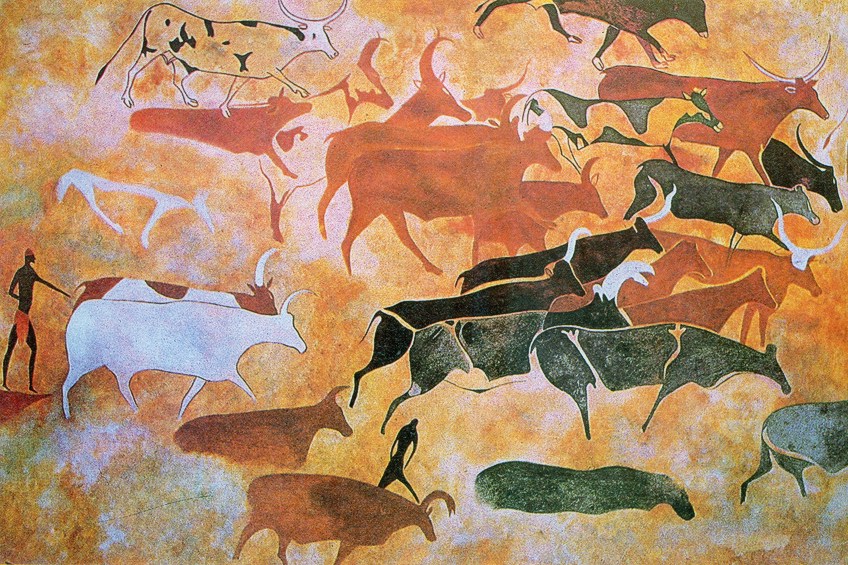Cave Paintings – Exploring the Depths of Prehistoric Cave Art
When “prehistoric cave art” comes to mind, you may have thoughts of the first cave paintings to be banal, distressed, ancient art forms with simple depictions of animals and the surrounding environment. However, the most famous cave paintings in the world beg to differ. Cave paintings form part of what is known as parietal art, which is another way of referring to cave art or prehistoric art found in enclosed spaces, typically rock shelters and mountainous regions with environmental conditions that support the preservation of rock art. Known as rock art in archaeology, cave paintings serve as a rich source of information beyond the initial visual imagery since they carry insights into early human life, historical events, and an overall visual and physical record of the time. Early cave art also encompassed what is called “home art” of the Upper Paleolithic and includes early art objects such as animal engravings, patterns, carved reliefs, paintings, and cut bone silhouettes. Listed below are 10 famous cave paintings well worth your attention.
What Is Paleolithic Cave Art?
To frame your understanding of the Paleolithic era (also commonly referred to as the Old Stone Age), it is useful to understand this period as divided into time segments defined by the use of tools, including the first use of fire, by the hominin species. This period is divided into three segments, namely, the lower, middle, and upper segments. According to anthropologists, it should not be imagined as having exact dates on when the period commenced and ended since there is always more to be discovered.
Paleolithic art refers specifically to various cave paintings, engravings, petroglyphs, and cave drawings found on the walls of caves spanning parts of Europe, Africa, and Eurasia.
Cueva de los Aviones, located southeast of Spain, is a cave where pigments and perforated seashell beads were discovered to be at least 115 thousand years ago (kya). Any artist of today would do well to consider the longevity of the artwork in production and most importantly, attempt to source materials that would ensure the extended life of an artwork. In the past, the availability of resources relied upon one’s hunting skill and one’s cognitive ability to develop one’s own medium from scratch.
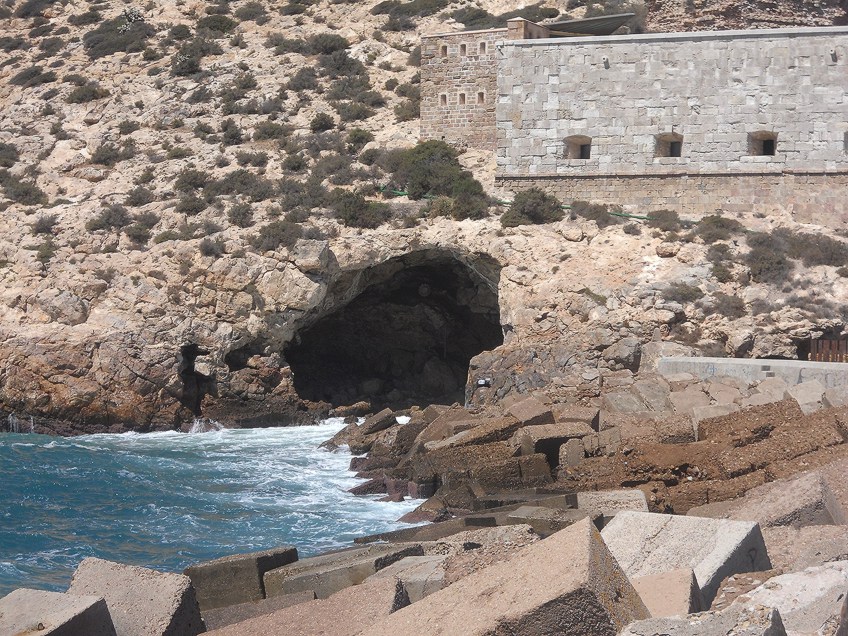
Paleolithic cave art was created using various pigments collected by early humans for multiple purposes, including ceremonial burials. One such example of a medium that carries longevity (in the right conditions) and is found in the most famous cave paintings is ochre. Ochre is a naturally occurring pigment made up of a mixture of iron oxides and earth.
These mineral pigments are found in multiple shades spanning dark chocolate, red (a variation of hematite), orange, and yellows (a variation of limonite). Other than ochre, oxide of manganese was another natural pigment that once pulverized, resulted in a blue-black color. The manner in which the paint was made involved the collection of fat from hunted animals and a mixture concocted using mineral pigments combined with the fatty substances to produce a paint-like quality.
Once applied to a cave wall, fast forward thousands of years later and you become witness to these prehistoric wonders!
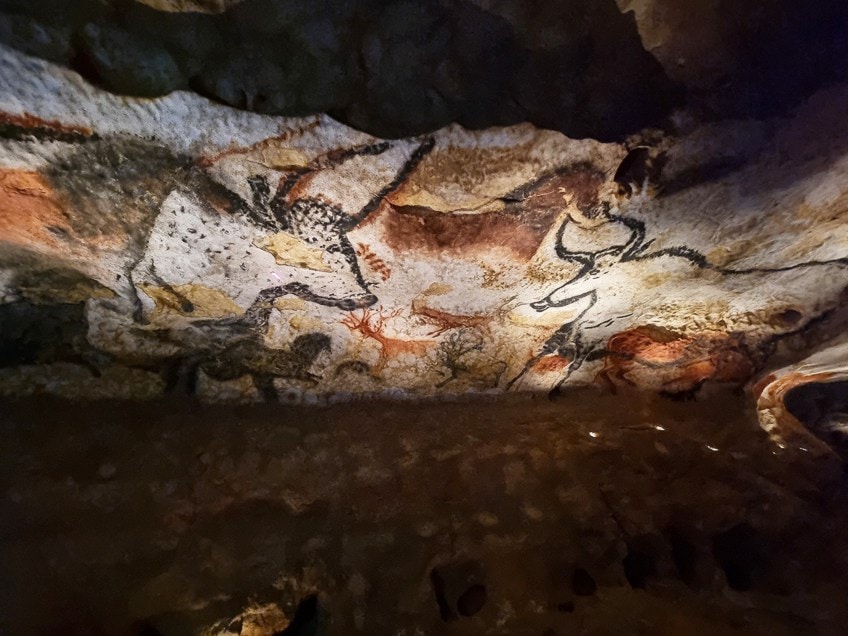
World-Renowned Cave Art
What is classified as art and how to distinguish a marking from artistic inclination is a strong area of debate. The following examples of cave art shown below are just a few of the many examples of prehistoric art (discovered) known to man and it is recommended that you try to consider the context in which these artworks may have occurred and how this informs your current practice or research area.
Cueva de Ardales: 64-Thousand-Year-Old Cave Painting (64.8 kya)
| Artwork | Red ladder shape painting |
| Date Painted | ~64.8 kya |
| Medium | Red ochre |
| Where It Is Located | Cave of Ardales, Spain |
While the main focus may tend toward the first cave paintings or the oldest cave paintings in the world, it would be wise to remember that at some point in the history of human development, there were other species that coexisted with our early ancestors. These include the Neanderthals, a heavily stereotyped species with societal connotations of being “less developed” than the modern human.
This was not the case, however, as it seems that the Neanderthal species, “Homo neanderthalensis”, shared a common cultural phenomenon with our early European ancestors – art.

According to an article published by National Geographic in 2018, the world’s oldest parietal artwork was in fact not made by modern humans as we might have perceived, instead, it was created by the hominin species in Spain around 64 kya. It is indeed a massive time difference as compared to the Sulawesi warty pig in Indonesia, which marks a minimum of 18.5 kya difference.
Shifting your attention back to the 64-kya artwork, the painting in question was found in southern Spain, on stalagmites at Cueva de Ardales (Cave of Ardales) near Malaga.
While the timeline of when the Neanderthals and modern humans intersected in the context of the production of the prehistoric paintings, it is worth considering as many insights as possible when framing your view of the artwork. Recent findings suggest that the site at which these paintings were discovered served as a systematic site where non-domestic tasks were carried out. Cueva de Ardales was most likely used as a site for burying the dead or producing rock art, as mentioned by one of the researchers involved in the study of the site.
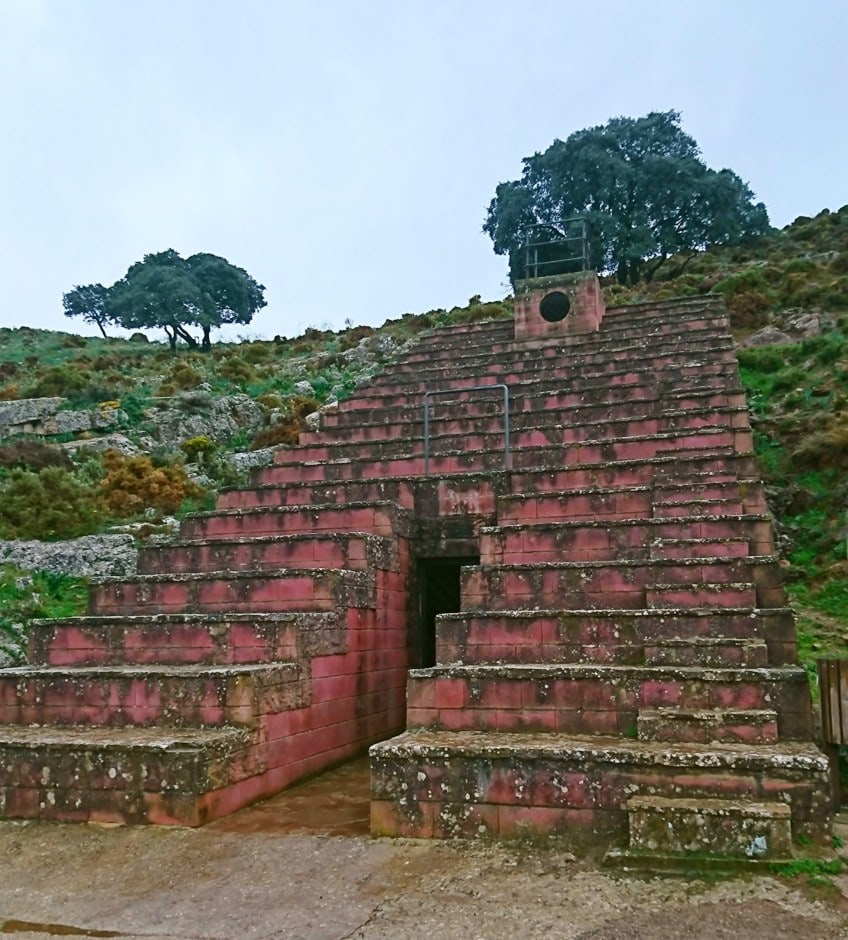
Cultural practice can also be determined by observing cave paintings and their use of symbolism as more than just a representation of the immediate environment. When studying cave art, it is useful to keep an open mind regarding the meaning behind these seemingly abstract and simple designs.
As with any artist’s creative practice, an artwork is almost always (in some way) informed by the environment in which it is made.
This can range from the very physical impact of the materials used and the weather conditions to the artist’s experience, emotional and physical disposition, cognition, and use of memory recall to recreate these images. The majority of elaborate cave paintings have been discovered further within a cave system. This can suggest that early artists would have had to actively recall their daily experiences of wildlife and document the image of the animal or object, as witnessed in their “mind’s eye”.
The Oldest Known Parietal Artwork: The Sulawesi Warty Pig (45.5 kya)
| Artwork | Figurative painting of a Sulawesi warty pig |
| Date Painted | ~45.5 kya |
| Medium | Red ochre mineral pigment on limestone cave wall |
| Where It Is Located | Leang Tedongnge cave, Sulawesi, Wallacea |
With around 300 sites containing pre-Austronesian rock art, the largest Indonesian island of Wallacea, Sulawesi, is the home to the first cave painting of an animal discovered by Basran Burhan, an archaeologist from Griffith University, in 2017.
The painting shows an image of a group of wild pigs painted in red ochre at Leang Tedongnge cave.
While many agree with the discovery of the earliest form of art, which appeared at Blombos cave, South Africa on a piece of ochre dated around 75 kya, there is much gray area when it comes to which aspect of art is considered the oldest. For now, the painting of the Sulawesi warty pigs exists as the first representational art form in the world, dated using U-series isotope dating, which situated the painting at least 45.5 kya.
While Sulawesi is now known for housing the oldest direct representation of cave art, it is also home to the first depiction of a hunting scene within the discourse of cave paintings.
El Castillo Cave (~40.8 kya)
| Artwork | Red stippled disk |
| Date Painted | >40.8 kya |
| Medium | Red mineral pigment |
| Where It Is Located | Panel de las Manos, El Castillo Cave |
Founded by Hermilio Alcalde del Río in 1903 and established as a UNESCO World Heritage Site in 2008, El Castillo is a famous archaeological site for rock art enthusiasts. Situated in Puente Viesgo, the site contains a labyrinth of limestone caves showcasing the brilliant artistic inclination of early human species.
Out of the many caverns, there are five sites that date back to the Paleolithic era.

Initially thought to be younger than the famous cave paintings at Chauvet, El Castillo overtook Chauvet in terms of oldest European artwork by 4000 years and was eventually overruled by the oldest artwork at Sulawesi.
Like most early cave paintings, the oldest Spanish artworks at El Castillo comprised hand stencils, disks, and non-figurative art forms painted in one color.
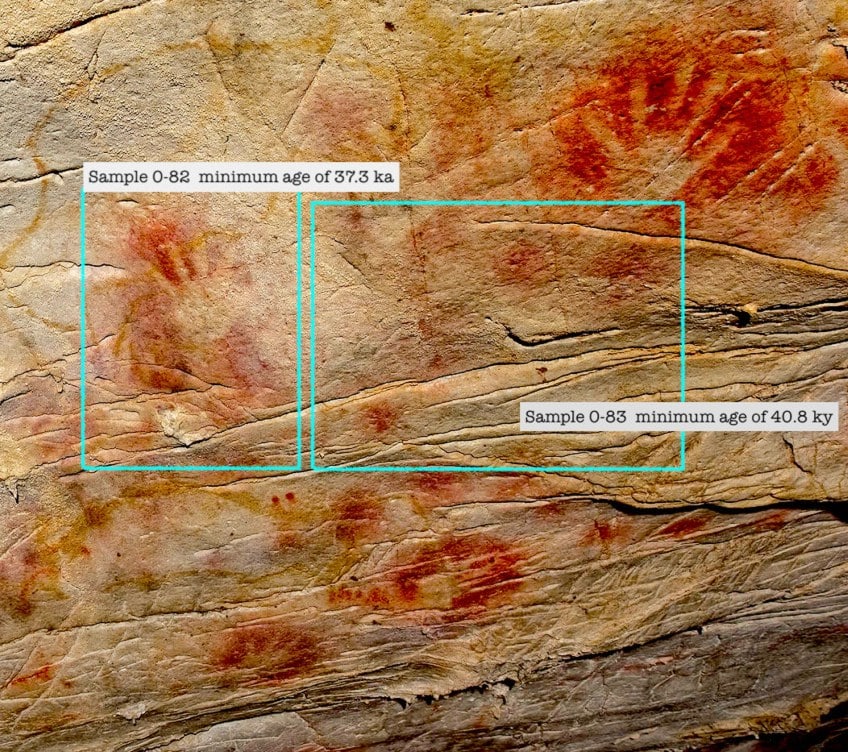
Africa: Apollo 11 (27 kya)
| Artwork | Stone slab drawings |
| Date Painted | ~27 kya |
| Medium | Charcoal, ochre |
| Where It Is Located | Apollo 11 Cave, Namibia, Africa |
Situated in Namibia, the Huns mountains encapsulates one of the oldest known rock paintings found in Africa. According to the Bradshaw Foundation, these painted stones, discovered at the Apollo 11 cave site, have been dated to roughly 27.5 kya. The dating of these painted rocks was also informed by its discovery in that the rocks were unearthed within the same layer as an artifact that dated to the Middle Stone Age.
The images on both the rocks make up one image of a feline creature with human legs.
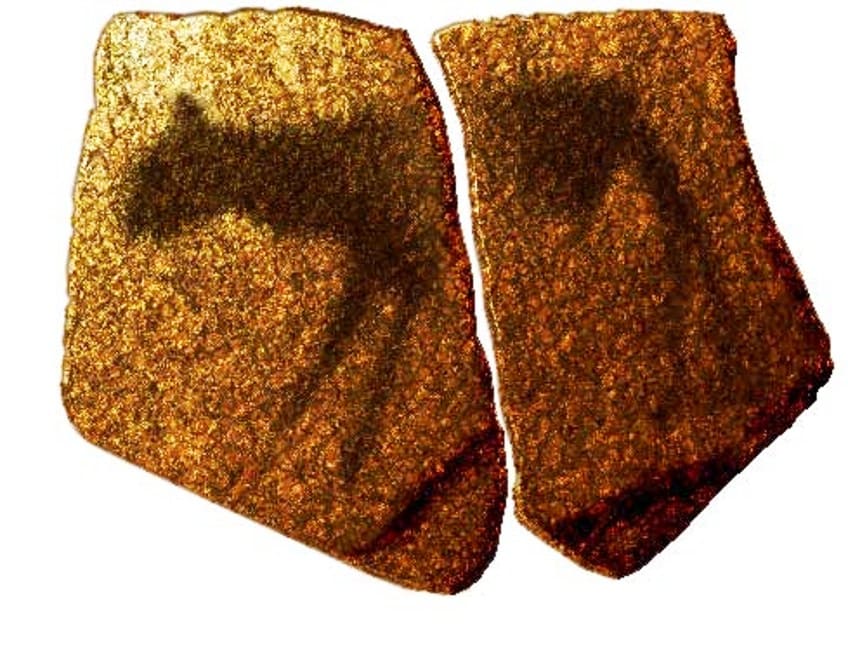
In rock art, depictions of humans with animal-like features or vice versa are called therianthropes and according to recent research, these may be indicative of evidence of early humans’ ability to imagine the idea of the supernatural through the environment. Other examples of therianthropes can be found in the rock art of Indonesia and even early San rock art. You may be familiar with the American space mission, Apollo 11 of 1969, from which the name of this cave was derived in celebration of such a historical event.
While these rock paintings form part of several other rock paintings found in the cave, there are other sites in Africa that supply evidence of objects estimated to date back to 100 kya.
Grotte Chauvet-Pont d’Arc: Chauvet Cave Paintings (17 kya)
| Artwork | The Owl |
| Age/Period | Aurignacian |
| Medium | Engraving on rock |
| Dimensions (m) | 45 (height) |
| Where It Is Located | Salle Hillaire, Grotte Chauvet-Pont d’Arc, France |
Discovered in 1994 by a small group headed by Jean-Marie Chauvet, this historical monument located just south of France in a limestone plateau of the Ardèche River, is one of the best-preserved sites of early Aurignacian artistic expression. Thanks to the cave being sealed off around 20 kya BP (Before Present) due to a rock fall, over 1000 drawings have successfully been preserved.
Chauvet cave consists of multiple sections distinguished by different geological traits. The owl engraving is located in the second section and is considered to serve as a typical curatorial device.
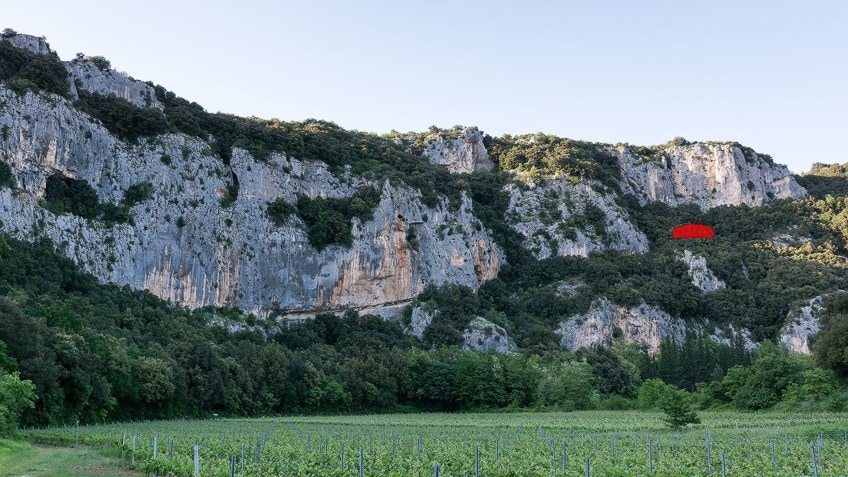
This is due to the fact that this artwork is only separated from the first section by another chamber, which was suitable for placing an artwork, but the early artists seemed to have chosen not to use that chamber and instead curated the owl engraving into the second section.
Another key difference that the section in which the owl lies is that the primary color used on the cave wall is now black and the engraving technique becomes a common medium. This amazing artwork can be considered the first of its kind in cave drawings that illustrates the owl’s ability to rotate its head at 180 degrees.
You can only imagine the fascination associated with the owl and the impact it had on those witnessing such an ability at the time. It was certainly worth documenting!
What makes the Chauvet cave paintings so significant is not only the need for preservation of an Ice Age Paleolithic era cave art but also the variety and skill so beautifully illustrated in the paintings themselves. While most parietal art of the era illustrates hunting animals such as horses and cattle, the cave paintings at Chauvet include other animals such as owls, lions, bears, panthers, and hyenas.
The uniqueness of the decorated cave is prevalent in its purpose, in that it is a genre of art specific to a time period that cannot be recreated since there is not much insight into the culture and practices of the people who drew the art and therefore great importance is placed on the cave’s security.
Grotte Chauvet-Pont d’Arc remains a carefully controlled environment since any minor changes to the cave’s internal environment (air and humidity) could result in changes to the already pristine and precious rock art.
Prehistoric Art at the Lascaux Cave (16-14 kya)
| Artwork | Great Hall of the Bulls |
| Date | c. 16-14 kya |
| Medium | Mineral pigment, charcoal |
| Dimensions (m) | 19 x 5.5-7.5 |
| Where It Is Located | Dordogne, France |
Founded in 1940 and granted statutory historic monumental protection, Lascaux cave contains numerous prehistoric treasures detailing large animals. Lascaux is made up of a compound of caves and is most famous for chambers such as the Great Hall of the Bulls.
The artistic expression found in this cavernous system covers abstraction, human figures, and animals – the majority of artwork was executed using mineral pigments and some traces of engraving.
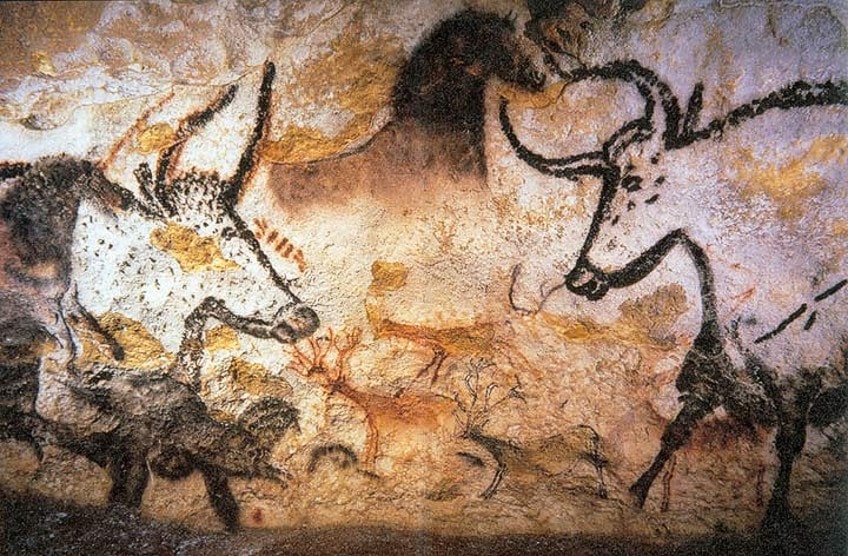
Most of the cave paintings depict animals, many of which are considered to be inspired by the migration of wildlife as witnessed by the inhabitants of the Valley of Vèzére. The spacious Great Hall of the Bulls can hold as many as 50 individuals, which indicates that it served as the perfect studio for the early artist(s) to bring to life their encounters with wildlife.
Seven sections of Lascaux have been included as part of the UNESCO World Heritage Site list.
Did you know that the Hall of the Bulls also houses a panel that appears to be a unicorn-like beast? This is not a representation of an actual mythological creature; rather, it is an animal with two horns drawn very close to each other, such that it appears to be one horn, thus being dubbed “The Unicorn”.
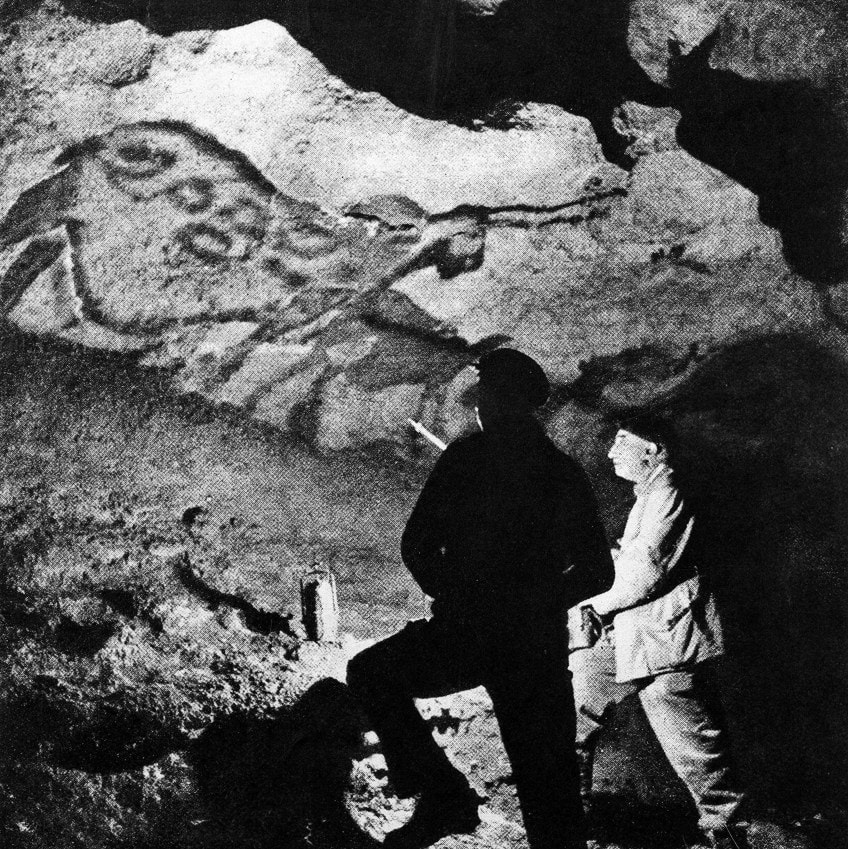
Altamira Cave: Polychrome Paintings (15 kya)
| Artwork | Bison painting |
| Date Painted | c.15 kya |
| Medium | Charcoal, mineral pigments |
| Where It Is Located | The Altamira Cave, Cantabria, Spain |
Discovered by Marcelino Sanz de Sautuola in 1879, Cantabria, Spain, the cave of Altamira is the first site of discovery concerning Paleolithic cave art, which then formed the basis of understanding Paleolithic humans as being capable of producing art. The aesthetics of Altamira are preserved in charcoal and polychrome drawings, as depicted in the image above, and based on two main cultures who occupied the cave over the course of 20 thousand years.
These cultures are the Solutrean and the Magdalenian, both known for their robust technological development as demonstrated through tool making and artistic production.
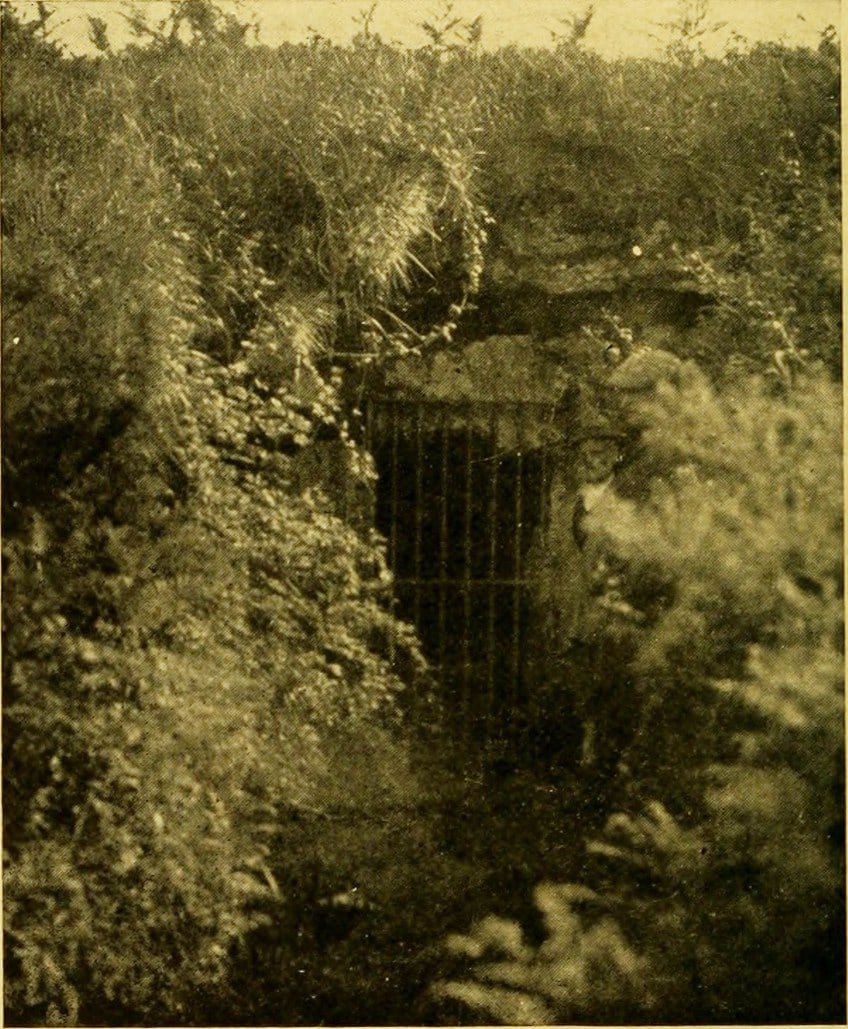
Like the Magura cave, Altamira is also host to paintings of different time periods. It was found in 2012 that there was a difference of around 10 thousand years between a few paintings in the cave. Not only does the cave become symbolic of a home, a place of record, security, and craftsmanship but it also serves as the prehistoric version of the modern-day artist’s studio. Perhaps you can even consider it to be a naturally occurring museum of parietal art.
The dominant subject matter of the paintings at Altamira is of animals such as horses, bison, and deer etched onto the cave wall and painted over.

It is as though the incisions on the cave walls were carved to hold the pigment in an attempt to preserve the drawings and their color. It can then be said that each group of people that followed the previous culture drew inspiration from previous chambers and developed this technique in an attempt to preserve their culture or existence.
Many bison and deer paintings fall under the Magdalenian culture and serve as an important touchstone from which you can learn to expand your knowledge of art history.

The sophisticated approach to combining the relief of the cave and three-dimensional aspects such as protruding rock surfaces with painting, adds an additional layer of creativity and artistic flair from which you can draw inspiration. Although limited in color choice, prehistoric art surely delivers on the creativity and genius leveraged to create these artworks.
Aside from animal depictions, Altamira also features geometric patterns and anthropomorphic figures. Many of the symbols and signs found in the cave have not been fully understood and await deciphering. The site also contains traces of finger-fluting, a common feature of prehistoric cave art.
Tassili n’Ajjer: The Biosphere Reserve (12 kya)
| Artwork | Painting of cattle and herdsmen |
| Date Painted | ~12 kya |
| Medium | Mineral pigments |
| Where It Is Located | Tassili n’ Ajjer |
The national park, Tassili n’ Ajjer, is situated on the border of Libya just southeast of Algeria and is regarded as one of the most important sites for rock art due to its boastful portfolio of over 15000 engravings and paintings, dating back to 12 kya.
The artwork produced here occurred at the end of the last glacial period in a once habitable environment. Yes – you read correctly! The Sahara was not always dry and uninhabitable as it currently stands.
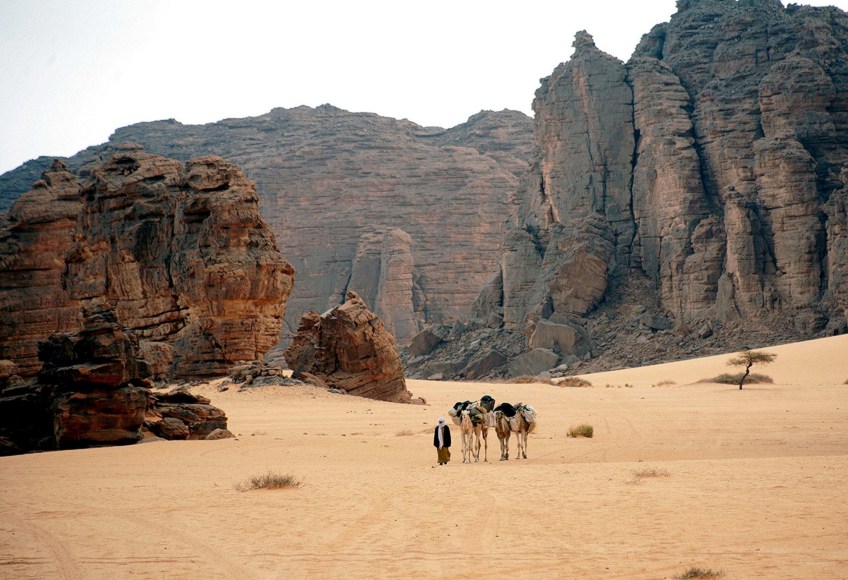
This was once home to much magnificent wildlife and the Saharan people who thrived off the abundant flow of water, freshly supplied by the mountains of the woodlands and the savanna. In many of the paintings, you can catch a glimpse of the Saharan pastoral way of living, which included domestic animals, sheep, cattle, and even crocodiles.
Not only does Tassili n’ Ajjer exist as a site containing a dynamic record of the social and cultural life of the Saharans but it is also a beacon for scientists to gain deeper insights into the environment, climate change, migration patterns of animals, and human evolution of the region at the time.
The art featured at Tassili n’ Ajjer depicts animals such as the hippopotamus, a water-reliant species, which has remained extinct at the site for many years.

Cueva de las Manos: The Cave of the Hands (9.3 – 1.3 kya)
| Artwork | Cueva de las Manos; stenciled human hands |
| Date Painted | c. 9300-1300 ya |
| Medium | Red and purple iron oxide, manganese oxide, kaolin, natrojarosite |
| Where It Is Located | Cueva de las Manos, Patagonia Region, Santa Cruz Province, Argentina |
This stunning arrangement of hands and demonstration of the hand as a stencil is one of many famous cave paintings found in Argentina, South America. This beautiful marking graces the entrance of the cave followed by a vast array of rock paintings featuring depictions of humans and animals, early human interactions, hunting scenes, and Lama guanicoe (guanacos).
As with the rock art discussed earlier, these paintings were executed using various mineral pigments. However, this arrangement also includes purple iron oxide, natrojarosite for the yellow shades, and kaolin for the white shades.
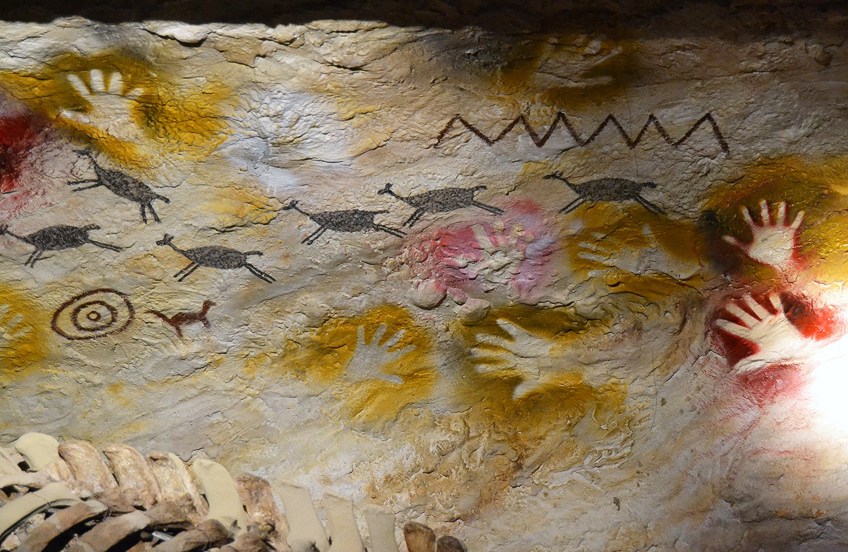
The cave of the hands is somewhat of a museum, since its continuity is what adds to its uniqueness, and the collection of paintings and art found in rock shelters makes it an excellent site for study. Along with the site’s abundant artistic portfolio, this cave is highly regarded by global experts as a key site for understanding the early hunter-gatherers as they lived and interacted with the environment of the Early Holocene. The sequence of art at Cueva de los Manos begins as early as 10 BP with its last known inhabitants sitting at 700 AD.
This cave remains as one of South America’s most important cultural and archaeological sites for building knowledge around early Patagonian hunters, hunting techniques, and their behavior.
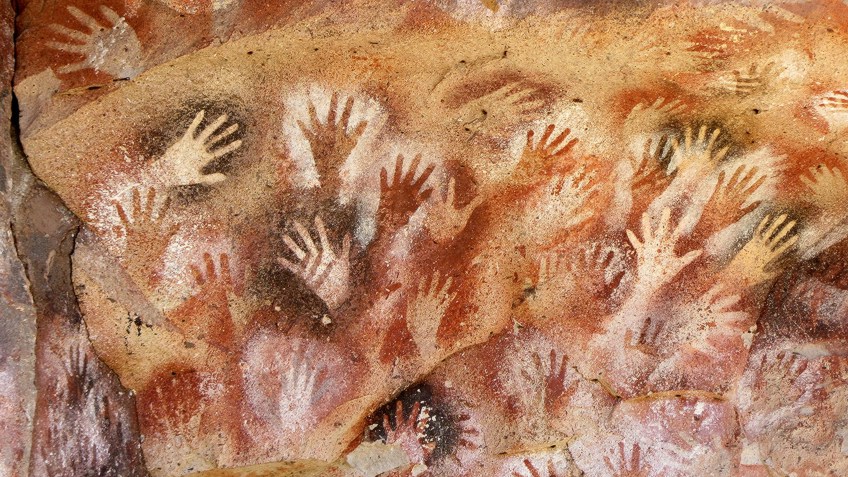
Rabisha: The Magura Cave (8 – 4 kya)
| Artwork | Magura cave painting |
| Date Painted | c. 8-4 kya |
| Medium | Fossilized bat guano |
| Where It Is Located | Rabisha, Bulgaria |
Geologically formed around 15 million years ago (mya), the limestone Rabisha cave of Bulgaria is home to a fairly odd rock painting created by direct carvings onto the rock surface and decorated over with bat excretion (guano). Doubling over as a site of exceptional geological treasures, the art encapsulated by these gorgeous stalactites and columns includes graphic motifs, silhouettes of women, people dancing, masked figures, hunting activities, stars, plants, religious ceremonies, and tools.
The Magura cave is not only defined by its spectacular display of Paleolithic art but is also inclusive of Neolithic and Bronze Age art with top-tier examples of abstraction and figurative art.
As if this popular tourist site could not be more intriguing, the Magura Cave offers an ideal climate for the production of sparkling wine as well as one of the earliest discoveries of a solar calendar from Europe, depicted by five events and 366 days on its sanctuary hall walls.
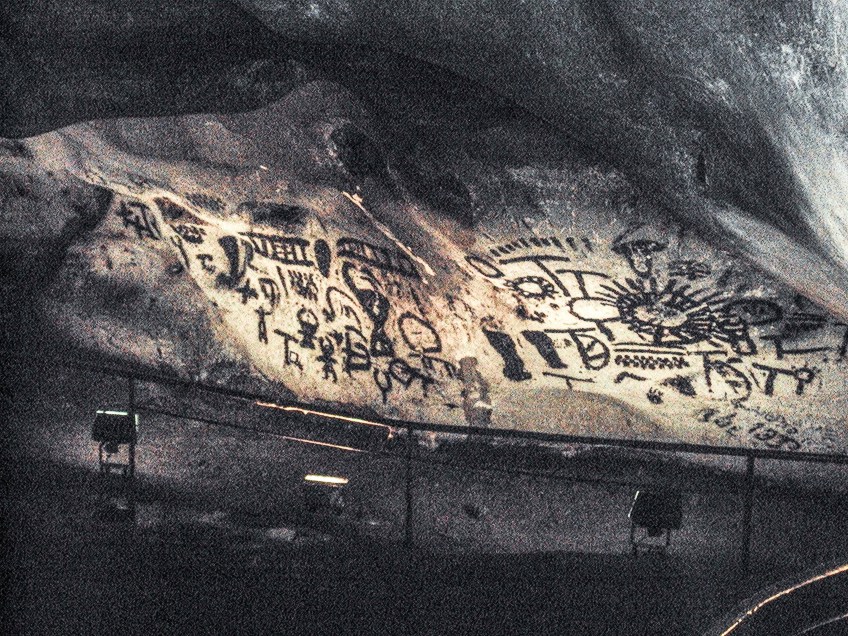
Prehistoric cave art offers many insights into the ways that art can be perceived in the absence of the true artist. Some of the oldest cave paintings can become sources of inspiration and even shed light on the origins of current artistic practices. Thanks to science and research, you can begin to form your own theories about the life, culture, and artistic intention behind prehistoric paintings. Other important sites with significant cave art include the Bradshaw rock paintings of western Australia, the Nine Mile Canyon in Utah, Laas Geel in Somalia, and Tsodilo Hills in Botswana.
Frequently Asked Questions
How Do Scientists Determine if Markings Found at Cave Sites Are Art?
The meaning behind mark-making is a highly debatable segment that offers much broadness, anthropologists, scientists, researchers, and archaeologists classify markings based on the environment in which they are found. Markings made on objects via engraving can be considered a symbolic practice related to décor or cultural practice and not necessarily art as compared to a direct example such as a painting. Mineral pigments had multiple uses, and the presence of representational, pictorial, or abstract markings made using these pigments served as an act performed by early humans, not necessarily for survival but for artistic purposes.
What Is Meant by Polychrome Painting?
Polychrome paintings in parietal art refer to surfaces decorated in multiple colors with artistic intention. Monochrome paintings generally consist of paintings made using one color, as in the cave paintings of Chauvet. Polychrome paintings are two or more colors integrated into the artwork, which can be seen in the vibrant images of bison on the ceilings of Altamira cave.
What Does the Aurignacian Period Refer To?
The Aurignacian period forms part of the Upper Paleolithic period and is defined by the technological and artistic characteristics of the time. This includes the migration of anatomically modern humans (AMH) from Africa to Paleolithic Europe and the establishment of what is archaeologically referenced as Cro-Magnons (early European modern humans). The European Aurignacian culture traversed between 39 and 29 kya and can be identified through a major expansion in tool development, the emergence of the first engraving tool, and small art objects.
What Is the Holocene?
The Holocene, an epoch, is part of the geological measurement of time and refers to the last 12 thousand years of history. Also known as the Age of Man, the Holocene is characterized by the time period during which many human civilizations emerged and fell, including the extinction of large mammals such as the wooly rhino and the end of the Paleolithic Ice Age. During this period, the earth’s climate had undergone multiple drastic changes, including the little Ice Age, a small period of lower temperatures without the presence of glaciers followed by an increase in temperature. These changes had other so-called side-effects such as human population increases, game scarcity, and rapid development across human processes. You may also know this epoch as the Anthropocene.
Where Do the Neanderthals and Modern Humans Intersect?
The Neanderthal species originated in Europe and parts of Asia during the same period in which the modern human species were emerging in Africa. These early hominins were known to be highly adaptable, as seen through evidence that places the species in regions as cold as Siberia (c. 60 kya) and as warm as Italy and Spain (c. 120 kya). Neanderthals are not as different from modern humans as once perceived since we have many similarities, other than culture. For example, although the Neanderthals did not directly produce representational art, they did engage in symbolism through jewelry-making and body painting. It is also thought that the two species, who have been found to have interbred, may have influenced each other’s behavior. The only evidence indicating that Neanderthals were capable of both symbolism and artistic expression leads back to the cave art at Cueva de Ardales – a clear sign that the Neanderthal is not a species to be undermined.
What Is U-series Isotope Dating?
U-series isotope dating (specifically referred to in context as Uranium-thorium or thorium-230 dating) is a radiometric dating method utilized to estimate the age of calcium carbonate-based matter. This dating technique is considered to be one of the most accurate, preferred dating methods available for use on cave deposits.
What Is Finger Fluting?
Finger fluting is the impression of lines caused by dragging your fingers in a particular direction, such that you are left with line markings. In cave art, these markings are normally found on soft clay deposits that once served as an easy material for early humans to produce what is now considered one of the earliest forms of Upper Paleolithic art.
Isabella studied at the University of Cape Town in South Africa and graduated with a Bachelor of Arts majoring in English Literature & Language and Psychology. Throughout her undergraduate years, she took Art History as an additional subject and absolutely loved it. Building on from her art history knowledge that began in high school, art has always been a particular area of fascination for her. From learning about artworks previously unknown to her, or sharpening her existing understanding of specific works, the ability to continue learning within this interesting sphere excites her greatly.
Her focal points of interest in art history encompass profiling specific artists and art movements, as it is these areas where she is able to really dig deep into the rich narrative of the art world. Additionally, she particularly enjoys exploring the different artistic styles of the 20th century, as well as the important impact that female artists have had on the development of art history.
Learn more about Isabella Meyer and the Art in Context Team.
Cite this Article
Isabella, Meyer, “Cave Paintings – Exploring the Depths of Prehistoric Cave Art.” Art in Context. July 14, 2022. URL: https://artincontext.org/cave-paintings/
Meyer, I. (2022, 14 July). Cave Paintings – Exploring the Depths of Prehistoric Cave Art. Art in Context. https://artincontext.org/cave-paintings/
Meyer, Isabella. “Cave Paintings – Exploring the Depths of Prehistoric Cave Art.” Art in Context, July 14, 2022. https://artincontext.org/cave-paintings/.


